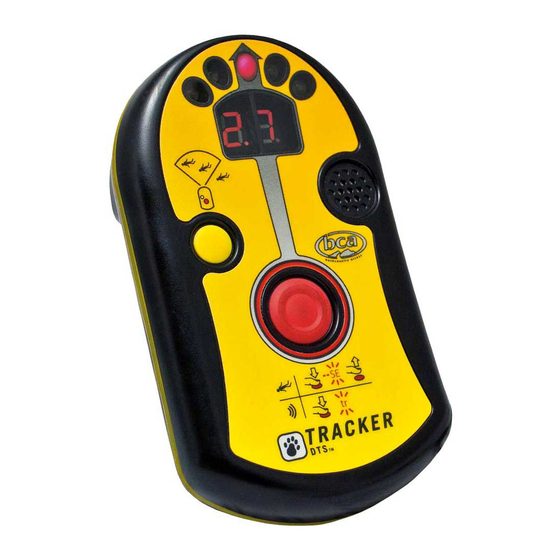
bca Tracker DTS Instruction Manual
Avalanche beacon/ transceiver
Hide thumbs
Also See for Tracker DTS:
- Owner's manual (14 pages) ,
- User manual (10 pages) ,
- Quick reference (9 pages)
Subscribe to Our Youtube Channel
Summary of Contents for bca Tracker DTS
- Page 1 Tracker DTS Instruction Guide Backcountry Access, Inc. 2820 Wilderness Place, Unit H Boulder, CO 80301 USA 303 417 1345 www.bcaccess.com info@bcaccess.com 092305...
- Page 2 The Tracker DTS Instruction Guide is a resource for avalanche educators and others teaching on-snow transceiver use. The objective is to help educators teach students how to properly use the Tracker DTS. However, this guide is equally applicable to other digital beacons and can be used for general avalanche transceiver training, whatever the brand.
- Page 3 However, a brief introduction should be provided, and they should become familiar with the search strip width of their transceiver. Use the diagram on the back side of the vinyl BCA flux diagram to illustrate the three phases of the transceiver search.
- Page 4 -Tracker DTS Instruction Guide - C) Secondary search: flux diagram usage Use the front side of the BCA flux diagram to illustrate the "flux" or "induction" line search. In the absence of this diagram, flux lines should be drawn in the snow.
- Page 5 -Tracker DTS Instruction Guide - 4) Verify the smallest distance/strongest signal by maintaining the Tracker’s orientation and moving it perpendicular to the point where the smallest reading is captured. More brackets can be performed until the lowest number is found. This is identical to pinpointing with an analog/audible-based beacon.
- Page 6 -Tracker DTS Instruction Guide - 1) Follow each student one-at-a-time to make sure they are "trusting" what the beacon is telling them. A common mistake is to travel straight despite the light flashing to the left or right of center. Another common mistake is to move too fast during the pinpoint search.
- Page 7 -Tracker DTS Instruction Guide - 2) If possible, use beacons of different brands as transmitters. This will allow students to experience their differing pulse rates. B) Show how the display looks with two beacons transmitting: 1) Using the same two transmitters, begin a secondary search from at least 20 meters away. Note what the display looks like when they have both been detected.


Need help?
Do you have a question about the Tracker DTS and is the answer not in the manual?
Questions and answers